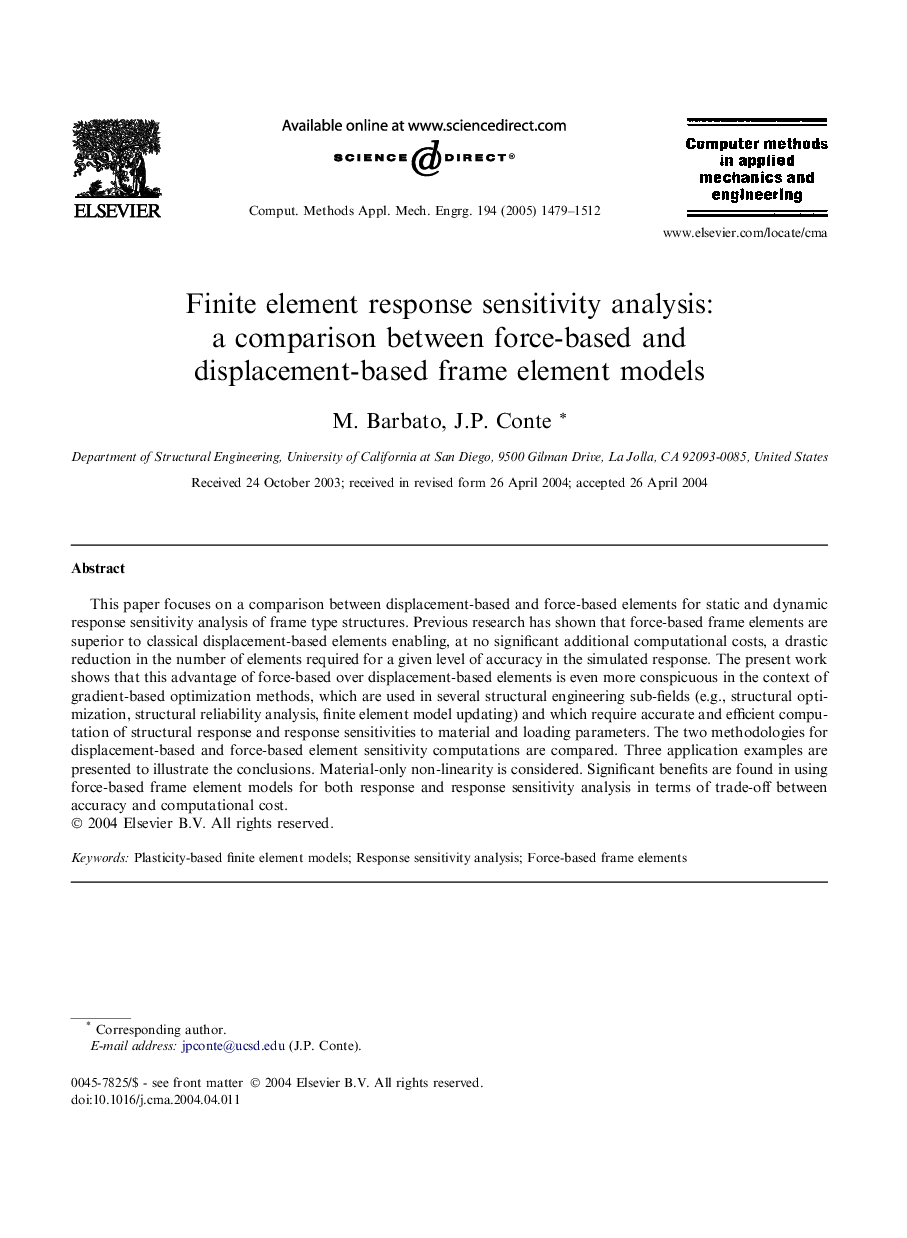| Article ID | Journal | Published Year | Pages | File Type |
|---|---|---|---|---|
| 9667099 | Computer Methods in Applied Mechanics and Engineering | 2005 | 34 Pages |
Abstract
This paper focuses on a comparison between displacement-based and force-based elements for static and dynamic response sensitivity analysis of frame type structures. Previous research has shown that force-based frame elements are superior to classical displacement-based elements enabling, at no significant additional computational costs, a drastic reduction in the number of elements required for a given level of accuracy in the simulated response. The present work shows that this advantage of force-based over displacement-based elements is even more conspicuous in the context of gradient-based optimization methods, which are used in several structural engineering sub-fields (e.g., structural optimization, structural reliability analysis, finite element model updating) and which require accurate and efficient computation of structural response and response sensitivities to material and loading parameters. The two methodologies for displacement-based and force-based element sensitivity computations are compared. Three application examples are presented to illustrate the conclusions. Material-only non-linearity is considered. Significant benefits are found in using force-based frame element models for both response and response sensitivity analysis in terms of trade-off between accuracy and computational cost.
Keywords
Related Topics
Physical Sciences and Engineering
Computer Science
Computer Science Applications
Authors
M. Barbato, J.P. Conte,
